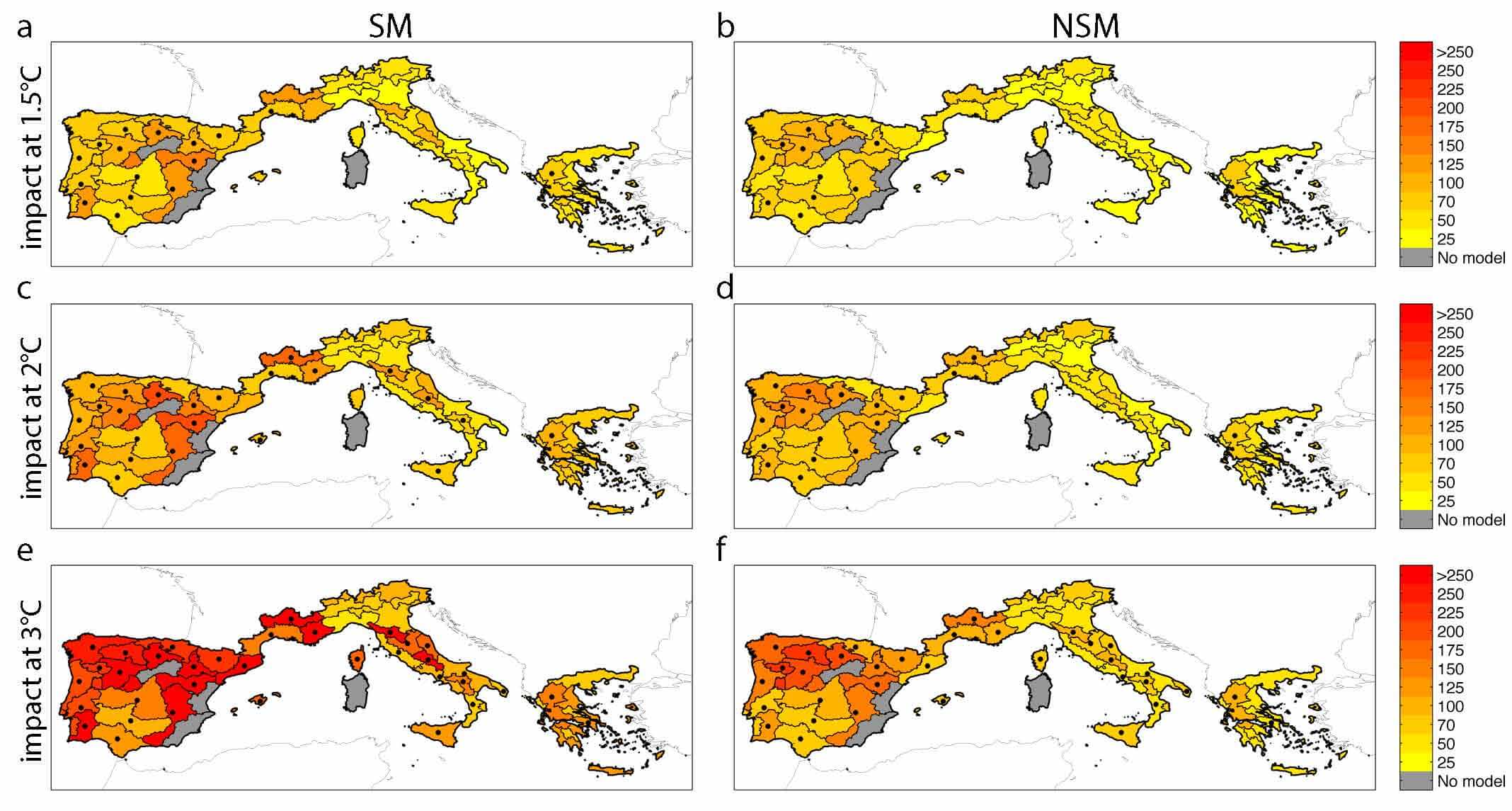Global warming will increase the potential of wildfire damage in Mediterranean Europe, a study led by researchers from the University of Barcelona (UB) finds.
The good news is, if the world can limit global warming to just 1.5 degrees Celsius, the damage from wildfires will be significantly less.
“To draw this conclusion we combined regional climate projections with several empirical models linking the summer burned area to key climatic drivers,” Marco Turco, a research fellow in the Department of Applied Physics at UB and lead author of the study, said in a statement.
“These results support the statement of the Paris Agreement (2015) that reports that limiting the temperature increase to 1.5 ºC would ‘significantly reduce the risks and impacts of climate change,’ ” he continued.
Rise of worldwide megafires
Worldwide megafires, induced by major heat waves, have recently made frontpage news all around the world. Overall, 2018 is on pace to be the fourth-warmest year ever.
In California in July, Death Valley set the record for the hottest month ever measured on earth. It reached 120 degrees Fahrenheit in Chino, and the Mendocino fire complex, which is the largest in state history, burned for more than a month.
It reached 106 degrees Fahrenheit in Kumagaya, Japan, in July, which is the highest temperature the country has ever experienced.
This past winter in Sydney, Australia, it reached 76.5 degrees Fahrenheit. Normally, average winter temperature in Sydney is between 47.8 and 62.6 degrees Fahrenheit.
Fires in Greece are engulfing cities, melting cars and killing people. The Greek government has declared a state of emergency, as the fires have killed 81 people and injured more than 190.
Fires in Sweden are the worst the country has experienced in decades, and the fires are pouring into the Arctic Circle.
Parts of Italy, Finland and Norway are also experiencing fires. Earlier this year, fires erupted in Siberia.
“There is no place that isn’t vulnerable as the surface of the earth heats up and dries up during summer months,” Michael Mann, an award-winning climatologist, geophysicist and current director of the Earth System Science Center at Pennsylvania State University, told TUN in August.
The study
The researchers used multiple regional climate models to estimate future burned area from summer fires in Mediterranean Europe.

The researchers found that if an average global warming of only 1.5 degree Celsius occurred, burned areas would only increase 40 percent. However, if the world is unable to limit carbon emissions and warming rises to 3 degrees, the amount of burned area would increase by 100 percent.
What can we do?
It is critical for scientists to keep developing fire models like this one, so the world can work to develop adaptation strategies.
As for slowing down the warming of the earth, it is always the same answer — stop greenhouse gas emissions.
“Ultimately there is only one true solution,” said Mann. “If we are to prevent the worsening of wildfires and other damaging extreme weather events, we must solve the problem at its source: reduce global carbon emissions. That requires a wholesale transition away from the burning of fossil fuels toward renewable energy. We must vote for politicians who support those policies and vote out those who don’t.”



